Sand is a natural unconsolidated granular material. Sand is composed of sand grains which range in size from 1/16 to 2 mm (62.5…2000 micrometers). Sand grains are either mineral particles, rock fragments or biogenic in origin. Finer granular material than sand is referred to as silt. Coarser material is gravel. Majority of sand is dominantly composed of silicate minerals or silicate rock fragments. By far the most common mineral in sand is quartz. Hence, the term “sand” without qualification is imagined to be composed of quartz mostly. However, sand is a natural mixture which means that it is never pure. By no means can one say that quartz and sand are the same thing. Consolidated sand is a rock type known as sandstone.

Colorful sand samples from various corners of the world:
1. Glass sand from Kauai, Hawaii
2. Dune sand from the Gobi Desert, Mongolia
3. Quartz sand with green glauconite from Estonia
4. Volcanic sand with reddish weathered basalt from Maui, Hawaii
5. Coral sand from Molokai, Hawaii
6. Coral pink sand dunes from Utah
7. Volcanic glass sand from California
8. Garnet sand from Emerald Creek, Idaho
9. Olivine sand from Papakolea, Hawaii
Formation of sand
Sand forms mostly by the chemical and/or physical breakdown of rocks. This process is collectively known as weathering. Physical and chemical weathering are usually treated separately, but in reality they usually go hand in hand and it is often difficult to separate one from another because they tend to support each other.
Chemical weathering is much more important sand-producing factor overall. It operates most efficiently in humid and hot climate. Physical weathering dominates in cold and/or dry areas. Weathering of bedrock which produces sand usually takes place in soil. Soil covers bedrock as a thin layer, providing moisture for the disintegration process of rocks.
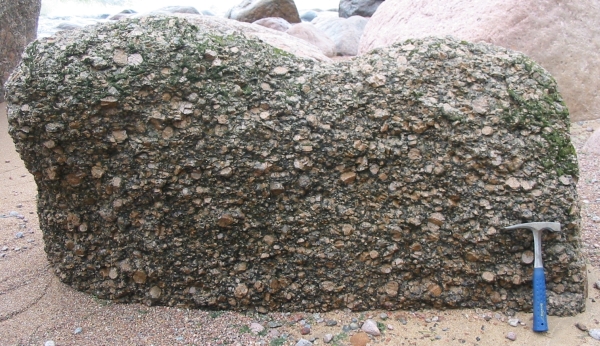
Weathered rapakivi granite on the coast of Karelia, Russia (The Gulf of Finland).
Granite is a common rock type and serves as a great example of sand forming processes. Granite is composed of feldspar (pink and white) which decomposes chemically into clay minerals. Another important constituent of granite is quartz (gray). Quartz is very resistant to chemical weathering. It does not alter to any other mineral — quartz is quartz and will remain that way. It eventually goes into solutions but VERY slowly. Hence, disintegrated granite yields lots of quartz grains which will be transported mostly by running water as sand grains. The sample is from Italy. Width of view 21 cm.

Here is a picture of disintegrated granite (sand sample) from Sweden. It is a mixture of angular quartz and feldspar grains. The abundance of feldspar and angularity of the grains is a strong hint that this sand sample has not been transported long from its source area and the climatic conditions can not be humid and hot. Width of sample 20 mm.

Here is an example of mature sand sample from USA (St. Peter Sandstone from the Ordovician Period). It is composed of almost pure and well-rounded quartz grains. This is what eventually happens if we give enough time for the nature to chemically destroy most other minerals that were present in the source rocks. St. Peter Sandstone has seen much increased demand in recent years because it is well-suited for fracking purposes. Width of view 20 mm.

But what happens to other minerals? They are either converted to new stable minerals in atmospheric conditions (mostly clay minerals) or get carried away as ions in hydrous solutions and end up in the oceans. So these are freshwater rivers that carry ions to the sea and make it salty. There is a nice amount of irony in it. Clay minerals are carried by rivers also and we usually refer to this load of clay as mud. There is a muddy temporarily dry riverbed on the picture. Mud that covers these rocks is a mixture of clay minerals, fine sand, silt, and water. Barranco de las Augustias, Caldera de Taburiente, La Palma.
Composition of sand
Sand is a residual material of preexisting rocks. It is therefore composed of minerals that were already there in the rocks before the disintegration commenced. However, there is one important aspect — sand occurs in a harsh environment where only the strongest survive. By “strongest” I mean the most resistant to the weathering processes.
Quartz is one of these minerals (list of minerals in sand) but not the only one. It is so dominant in most sand samples because it is so abundant. 12% of the crust is composed of it. Only feldspars are more abundant than quartz. (Here is more information about the composition of the crust).
Relatively rare minerals like tourmaline, zircon, rutile, etc. are also very resistant to weathering, but they rarely make up more than few percents of the composition of sand. These minerals are collectively referred to as heavy minerals.
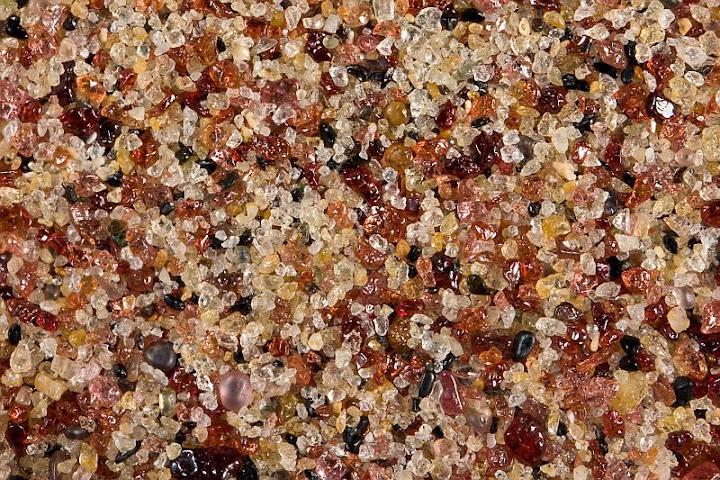
Beach sand from Sri Lanka that contains lots of heavy minerals. Most of them are reddish spinel and garnet grains. Width of view 20 mm.
Heavy minerals may sometimes occur in sand in much higher concentrations. This is usually a result of hydrodynamic sorting. Either sea waves or river flow sort out heavier grains and carry lighter ones away. Such occurrences are known as placers and they are often used as a valuable mineral resource. Minerals that are often extracted from placer deposits are gold, cassiterite, ilmenite, monazite, magnetite, zircon, rutile, etc.

Concentrate of zircon extracted from beach sand in South Africa. Width of view 12 mm.
Quartz definitely dominates in most sandy environments, but it is usually accompanied by feldspars. Feldspars are only moderately stable in atmospheric conditions, but their overall volume in common rocks is huge. More than half of the whole crust is composed of feldspars. Other common rock-forming minerals like amphiboles and micas also frequently occur in sand. Some common minerals in certain rocks like olivine and pyroxenes occur in sand in smaller volume because their resistance to weathering is nothing to brag about.
However, there are enough sandy beaches that are mostly composed of pyroxenes and olivine with magnetite. How can anything like that happen? Such beaches with a black sand occur in volcanically active areas where quartz-bearing rocks are missing. Pyroxenes and olivine are common minerals in mafic rocks like basalt. Black sand is a typical phenomenon of oceanic volcanic islands where granite is missing and felsic quartz-rich rocks rare.
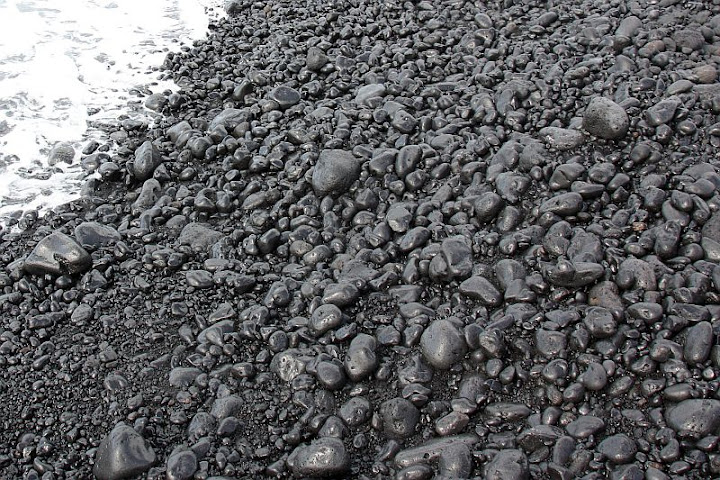
Basalt pebbles near the southern tip of La Palma slowly transforming into black sand typical to volcanic oceanic islands.

Black sand forms in volcanic islands if quartz and biogenic grains are not available. Here is a basaltic cliff and black sand on La Palma, Canary Islands.
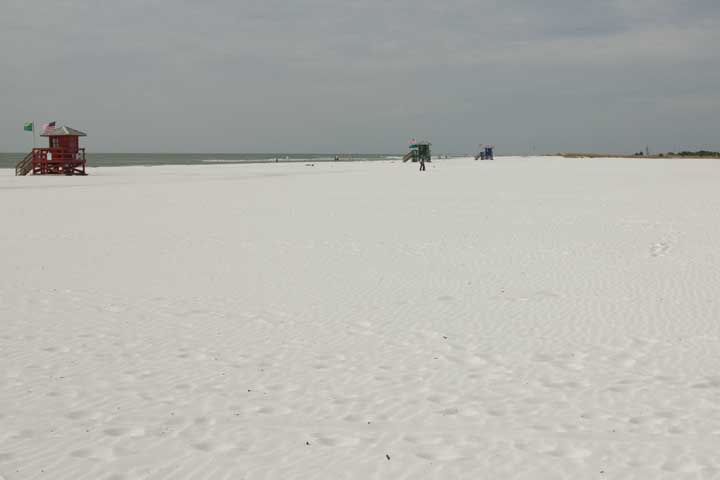
Siesta Key beach sand in Florida, on the other hand, is composed almost exclusively of quartz grains and is therefore as white as it possibly can be.
Most sand samples consist of sand grains which are composed of a single mineral — quartz grains, feldspar grains, etc. But sand may also contain grains that are aggregates of crystals i.e. fragments of rocks (known also as lithic fragments). Lithic sand is usually immature and it also tends to form when rocks are very fine-grained. Granite usually disintegrates into distinct mineral grains, but phyllite and basalt for example are often so fine-grained that they tend to occur in sand as lithic fragments. Lithic fragments are also common in regions where erosion is rapid (mountainous terrain). You can find more about immature sand in this article: Sand that remembers the rock it once was.
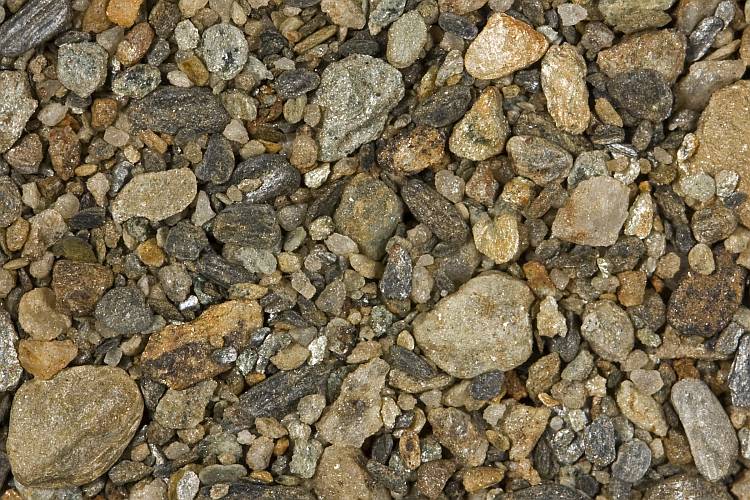
Fragments of micaceous fine-grained metamorphic rocks (phyllite, mica schist) from Canada. Width of view 20 mm.
Sometimes sand contains new minerals or mineral aggregates that were non-existent in the source rocks. Notable example is a clay mineral glauconite which forms in marine sand and gives distinctive dark green color to many sand samples. In some instances glauconite in sand may come from disintegrated glauconitic sandstone nearby, but eventually it is of marine origin anyway.
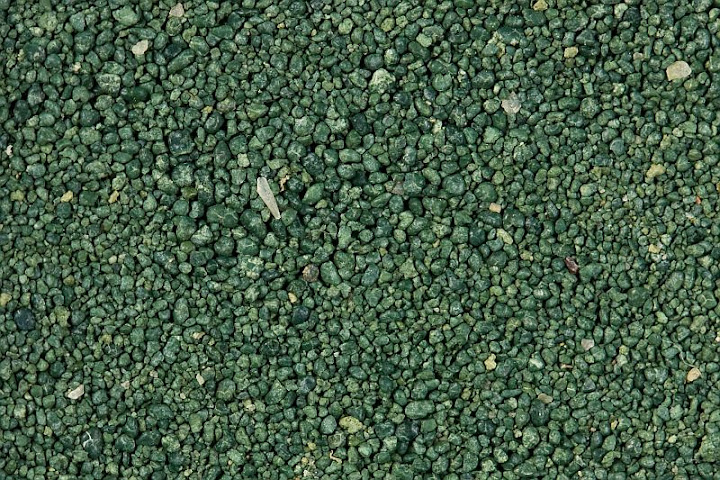
Glauconitic sand from France. Width of view 20 mm.
There are many other strange sand samples that require special formation conditions. One good example is sand in New Mexico that is composed of pure gypsum. I have written about it here: Gypsum sand. Sand with such a composition is odd and unexpected because gypsum is an evaporite mineral. It was precipitated out of hyper-saline water and it goes easily into solution again. Hence, it can only survive in dry conditions with no outlet to the sea. Halite, which is even more soluble than gypsum, is also known to form sand in special conditions.
Volcanic ash is usually treated separately, not as a type of sand. Probably because we humans tend to create artificial barriers and classification principles. We think that sand is a collection of sedimentary particles, but sedimentary and igneous rocks are two different worlds. In reality, this is more complicated because there is every reason to say that volcanic ash grains (and other pyroclastic particles like lapilli and volcanic bombs) are also sedimentary particles because they got deposited on the ground not much differently than sand grain in a dune does. Volcanic ash and sand have even comparable classification principles — volcanic ash is a pyroclastic sediment with an average grain size less than 2 millimeters. Hence, volcanic ash is a volcanic analogue of sand and silt.

Volcanic ash from St. Helens is composed of pumice fragments and mineral grains. Width of view 20 mm.
Third major and versatile component of sand (two others were mineral grains and lithic fragments) are grains of biogenic origin. Biogenic sand is composed of fragments of exoskeletons of marine organisms. Common contributors are corals, foraminifera, sea urchins, sponges, mollusks, algae, etc. Such sand is usually known as coral sand although in many cases it contains no coral fragments at all. Biogenic sand is light-colored and widespread in low latitude marine beaches although there are exceptions. Corals indeed live only in warm water, but many other taxons can do well in colder climate (coralline algae, clams, some forams). Most biogenic sand grains are calcareous and provide material for limestone formation. Most limestones are former calcareous muds deposited on the seafloor.
Sometimes sand contains or is entirely composed of well-rounded carbonate grains that are not fragments of dead marine organisms. These grains are ooids that also require special formation conditions.

Biogenic sand from Tuamotu is mostly composed of forams. Width of view 20 mm.

Ooid sand from Cancún, Yucatán, Mexico. Width of view 5 mm.
Sand does not need to be a pure collection of either mineral, lithic, or biogenic grains. In many cases two of them and sometimes even three are mixed.

Mixture of mafic volcanic rocks and various biogenic grains in a sand from the Azores archipelago. Width of view 20 mm.
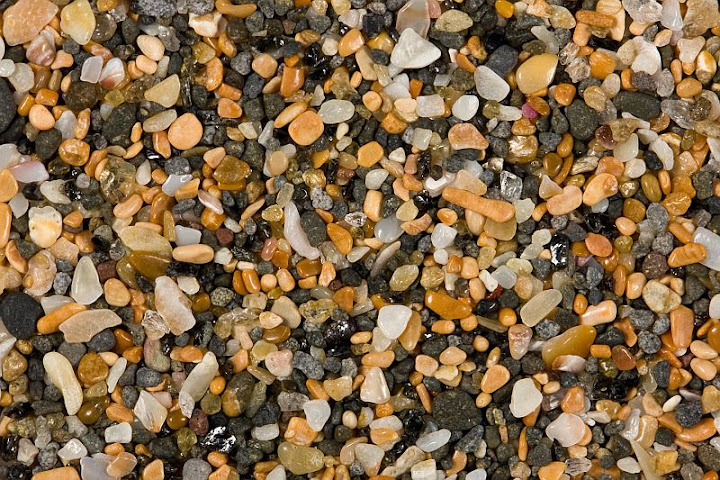
Mixture of dark-colored volcanic rocks, worn-out biogenic grains, and some silicate grains from Jeju-do Island, South Korea. Width of view 20 mm.
Texture and transport of sand
Geologists describe sand by measuring the roundness of grains and the distribution of grain sizes. By doing that they hope to shed some light on the origin of the grains being measured. Roundedness usually gives information about the length of transport route and distribution of grain sizes helps to determine from which environment these grains come from. River sand is usually poorly sorted and compositionally immature. Beach sand is more rounded and eolian dune sand is generally well sorted.

Poorly sorted river sand from Sikkim, India. Width of view 20 mm.
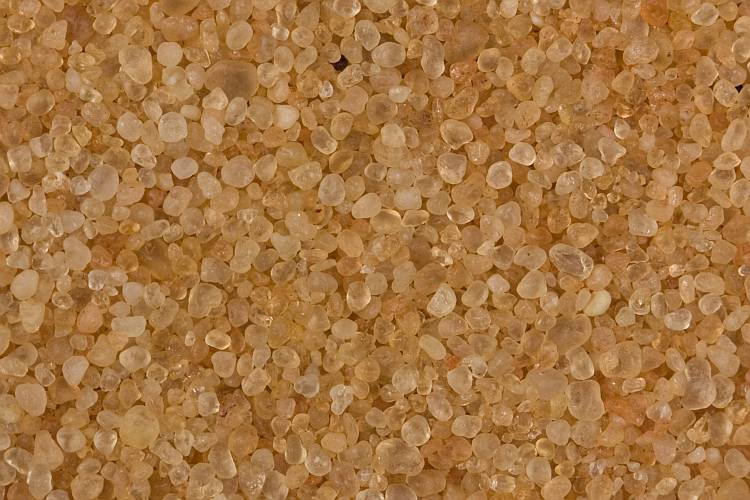
Eolian sand from the Erg Murzuk, Libya. Dune sand is generally well sorted (grains are similar in size). Width of view 15 mm.
The average size of grains is determined by the energy of the transport medium. Higher current velocity (either stream flow or sea waves) can carry heavier load. Coarse-grained sediments therefore reveal that they were influenced by energetic medium because finer material is carried away.
Sometimes river flow is so energetic that sand grains are all carried away and only large rounded stones remain. Such lithified deposits of former riverbeds are known as conglomerates. Photo taken in Cyprus.
Sand is mostly transported by rivers, but average sand grains are too large and heavy for average river to carry them in suspension. Hence, sand grains tend to move in jumps. They are lifted up by more energetic current and settle out when current velocity decreases and then wait for the next jump. This mode of movement is known as saltation. Average silt grain moves differently. It is light-weight enough to be carried in suspension for a long time and this is actually one of the most important reasons why we treat silt separately from sand.
Most sand grains carried by the rivers are eventually deposited at the rivermouths where the current velocity suddenly drops. Then sea waves (longshore currents) take over and carry sand along the coastline. Sand grains carried by the rivers are also deposited on alluvial flood plains and point bars (inside bend of streams where current flow is the slowest).
Sand is also transported by wind, ocean currents, glaciers, turbidity currents, etc. Moving sand forms landforms like ripples and dunes.

Wave ripples on a tidal flat in Ireland.

Dunes of Maspalomas on Gran Canaria.

Sand dunes near Stovepipe Wells, Death Valley (Mesquite Dunes).
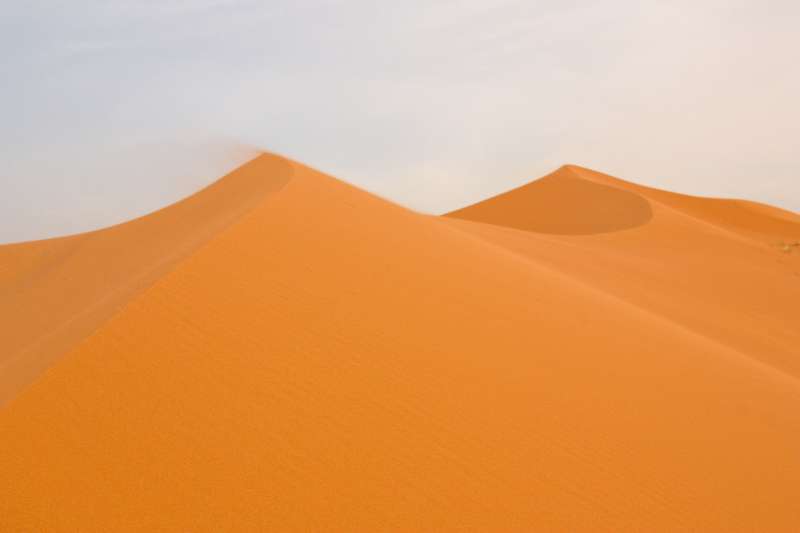
Sand dune in Sahara (Morocco) on a windy day.
Further reading
Pettijohn, F. J., Potter, P. E. & Siever, R. (1973). Sand and Sandstone. Springer
Siever, R. (1988). Sand, 2nd Edition. W H Freeman & Co.
I need to know what is the sine of Natural sand and what is the definition of natural sand as per which indian standard
Hello!
I just wanted to know who the Author is.
Yours faithfully,
Patrick
I am the author.
I’ve been looking using the net quite a few hrs currently, but certainly not encountered any sort of attention-grabbing document just like your site. It really is striking worth enough for me. In my opinion, if many online marketers and bloggers designed very good information materials you probably did, the online world will likely be far more beneficial than everbefore.I am going to book mark this blog !! Will obviously go through again !! Thanks for those useful information and facts.